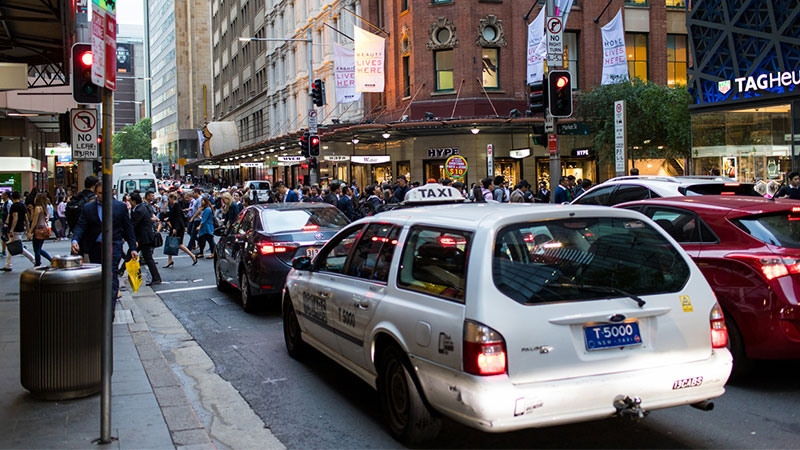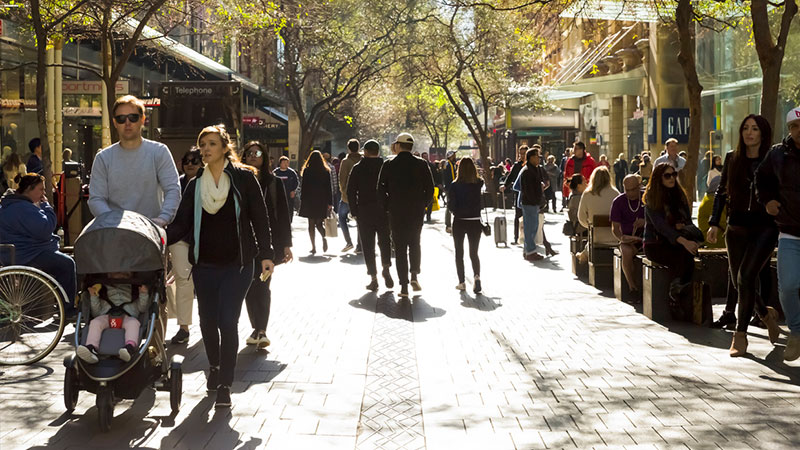Planning Minister Calls for Urgent National Population Strategy
The NSW planning minister Rob Stokes has backed the Planning Institute of Australia's calls for a “national settlement strategy”, to regulate Australia's population, which is projected to increase by 50 per cent over the next 30 years.
While the politically charged issue of population growth has continued to drive debate, many experts agree a pathway is needed to balance the economic benefit of a fast-growing population against its environmental and community impact.
In Australia's major cities — notably Sydney and Melbourne — population growth has run ahead of infrastructure and land release, causing increased congestion, leading to longer commutes between housing developments on the fringes of major cities and CBD-based jobs.
The increased pressure on infrastructure in these cities has perpetuated large-scale catch-up programs with the Commonwealth failing to address the nation's trajectory through a coherent planning strategy.

Under the current system, the federal government controls how many people can immigrate to Australia, leaving state governments with little insight into how much infrastructure is needed for the growing population.
A national settlement strategy, as Stokes frames it, would not be about forcing people to settle anywhere, nor would it change constitutional responsibilities for planning.
Instead, it would provide a mandate to plan for better connected and more liveable cities and towns — and would correct Australia’s trajectory towards becoming a nation dominated by a few congested megacities.
“None of this is an argument either for or against a high rate of immigration,” Stokes told The Sydney Morning Herald.
“Just as a town planner will point to the impacts of increasing population on infrastructure, so any economist will point to the link between population and economic growth.”
Proposals for a national settlement strategy come amid the rapid growth in population, and particularly in the major cities like Sydney and Melbourne.
The population of greater Sydney increased dramatically by more than 1.1 million people between 2001 and 2018, outpacing historical projections.
To the year ending in March 2019, Australia’s population grew by 1.6 per cent while net overseas migration was up 4.9 per cent compared to the previous year.

As birth rates further fall across developed economies, population growth becomes more reliant on migration.
That’s been the case in Australia for many decades, with population growth underpinned by migration with a skew toward skilled migration.
Australia’s skilled migration program brings a range of economic benefits, adding to gross domestic product growth per person and hence helps increase living standards.
“What is clear is that decisions by the federal government about immigration have profound impacts on the size and distribution of population that the states are left to plan for — without knowing how many people will rely on public services into the future,” Stokes said.
Stokes also claimed that “the economy exists to serve the population” and not visa versa.
“If we are to plan strategically and thoughtfully for the long-term prosperity of our nation, we need nationally consistent methods for collected data, and nationally calibrated planning assumptions and horizons.”
The Planning Institute of Australia (PIA), which called for a national settlement strategy last year, has followed the blueprint of the Whitlam government which had a perspective of fostering the economic development of the nation’s regions as part of such a strategy in the '70s.
The Commonwealth parliamentary standing committee on infrastructure, transport and cities also proposed a settlement strategy last year arguing a national perspective was needed to “set out a vision of what our cities could and should look like over the next 50 years and provide a pathway to achieving that vision”.
“What’s urgently needed is a thoughtful response to urbanisation and other mega-trends which respects the character and needs of our major cities and promotes and connects thriving regional economies,” PIA national president Steve O’Connor said.
The federal minister for population Alan Tudge said that a future Australia dominated by two or three megacities was not an outcome most Australians aspired to.
He said the federal government's plan to ease the pressure on major cities from Australia's expanded population — had "underpinned our GDP growth".
The measures — which are being considered after the government reduced the annual permanent migration cap from 190,000 to 160,000 — would include fast rail, infrastructure and “further incentives and support for humanitarian entrants to go to regional areas”.














